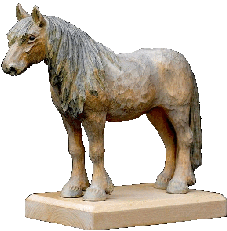On historic ground

Before Norway and Sweden agreed on the exact border in 1751, no one officially had permanent residence on the south side of the lake, apart from two wood-cutters placed there by the mine administrators at Røros. Two years after the agreement a Jon Jonsen, a carpenter, applied for the property now called Sorken. He rebuilt an old house on it, which he brought with him. That building is now the western part of the old house.
The farm is one of the only ones, if not the only one in the area to still have its entire selection of old buildings intact.
In 1870 the French author, Paul de Graillu, visited the farm on his way north from Dalarna in Sweden. He described the vicar's house with exactly the same colours as today.
The farm has had a varied production. Cows, sheep, goats, horses and probably many other animals have been a source of livelihood. In addition to that it has been a post-change or "horse change inn" for two hundred and fifty years. The farm offered overnight facilities and fresh horses to Swedes travelling with goods from Mora to Røros right up until 1930. It could house up to 40 horses. Today the tradition is commemorated every two years, on about the 12 of Feburary when enthusiasts repeat the trip with horses and sledges in order to get to the yearly market at Røros.
The renowned woodcarver Hans Sorken, who died in 1990, was born on the farm in 1908. He lived and worked in the old "Main house" till 1947. Some of his work can be seen in the forest-museum in Elverum, in the "kommunehus", and in several churches in Engerdal. A lot is in privet homes but we have a modest collection here in our farm museum.
Today no one lives in the old houses, They are just used by visiting tourists. The present farmer lives in the new house from 1970.
Cows wander around the fields in the summer.
